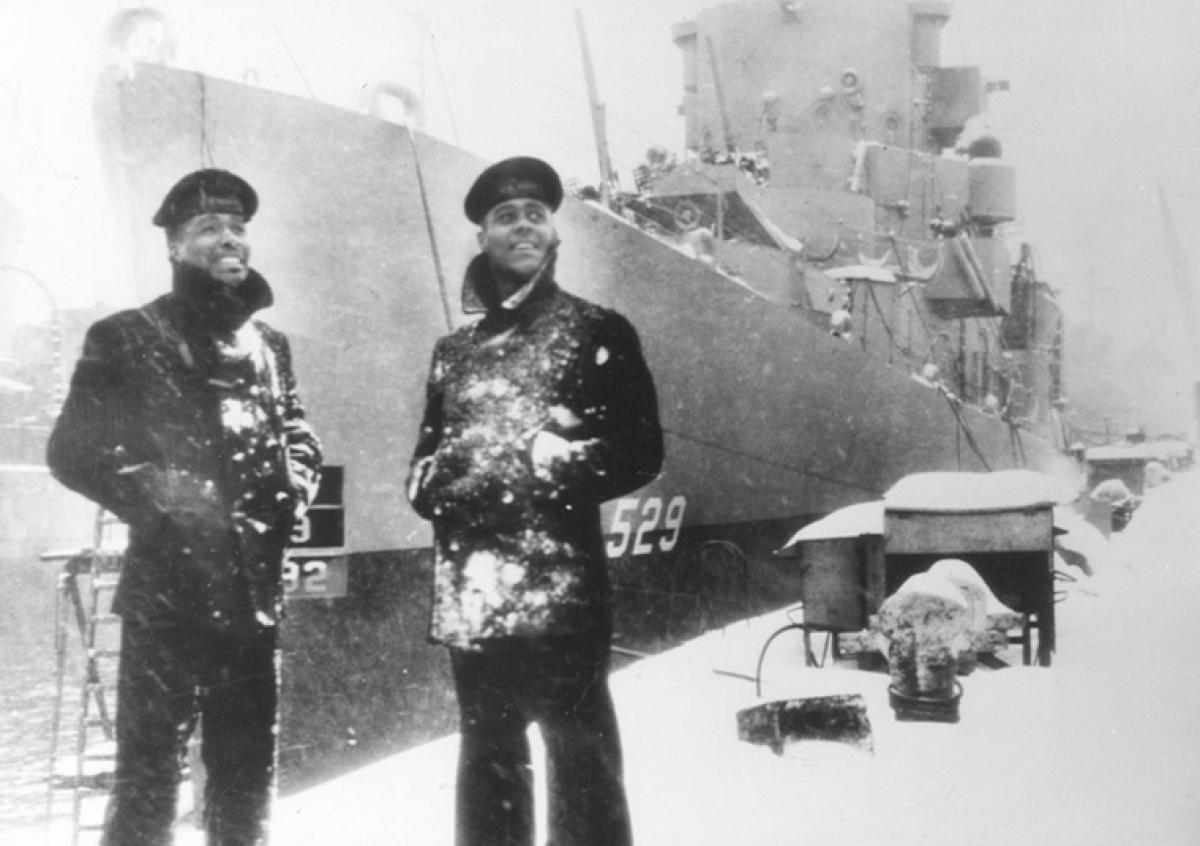The U.S. sea services emerged from World War II as history’s most powerful naval force. But the Navy, Marines, and Coast Guard also changed in other, often overlooked ways during the conflict.
This issue focuses on African-Americans’ wartime experiences, and the title of William Thiesen’s article about blacks in the Coast Guard pretty well sums up the theme—“Change Hastened by Conflict.” In 1942 the Navy Department (which then included the Coast Guard) began taking hesitant but significant steps toward ending racial discrimination.
Weeks after the Pearl Harbor attack, the NAACP had telegrammed Navy Secretary Frank Knox, asking for a revision of the service’s racist policies regarding blacks, who were restricted to serving in the Messman Branch. “Thirteen million American Negroes want to know if only white Americans are to be permitted to fight and perhaps die for our country in the navy,” the message stated. The reply: “For the time being no change is contemplated.”
African-Americans weren’t even allowed to serve in the Marines. Commandant Lieutenant General Thomas Holcomb said that blacks looking to join the Corps were “trying to break into a club that doesn’t want them.”
Politics—specifically voting clout resulting from blacks’ Great Migration out of the South—played a large role in spurring change. In April 1942 at the White House’s insistence, Secretary Knox told sea service leaders that they must begin accepting African-Americans for general service.
When Edgar Huff heard that the Marines would begin enlisting blacks, he hurried to join up. In “Memories of Montford Point,” he recollects his early years in the Corps. Segregation was official policy, and the Marines established a special camp, Montford Point, for training its black enlistees.
For most of the war, about the only black sailors who got to sea were mess attendants, stewards, and cooks. That began changing in the spring of 1944 with the commissioning of the Mason (DE-529) and PC-1264, the Navy’s first ships with predominantly African-American crews. Nevertheless, the service generally restricted blacks to serving in certain billets, including jobs lifting and moving cargo.
That was the case for the black sailors serving at the Port Chicago Naval Magazine. In “From Disaster to Desegregation,” Robert Allen describes how, after an explosion there killed hundreds, many blacks refused to go back to work loading munitions under unsafe conditions. Fifty were eventually court-martialed and found guilty of mutiny. “Given the Navy’s racial policy changes in the wake of the ‘mutiny’ it is clear that the overall impact on the Navy was to help push a policy shift toward racial desegregation,” Allen told me.
In addition to writing a book about Port Chicago, Allen serves on the board of the independent, nonprofit Friends of the Port Chicago National Memorial. “In the name of justice and fair treatment,” he said, “we believe it is time to exonerate and expunge the records of the sailors who were involved in the work stoppage.”
Attention Institute Members
Naval Institute members who receive Naval History in lieu of Proceedings should have received a 2015 Naval Institute ballot with this issue. Biographies of Board of Directors and Editorial Board candidates appear in the magazine on pages 68–69. Members who receive Proceedings will receive a ballot with their January issue.




